Solarpunk: Refuturing our Imagination for an Ecological Transformation
In a recent article, we delved into the concept of an ecological civilization, which envisions a new era of humanity, one that prioritizes human and ecological flourishing alike. Perhaps it shouldn’t have surprised us, but what most captivated readers were the images. These images offered enchanting, evocative glimpses of what life could feel like, free from pollution and the looming specter of ecological catastrophe. This type of imagery can quench a thirst in us we didn't know we harbored. Creating that feeling is the operating strategy behind Solarpunk: “a movement in speculative fiction, art, fashion, and activism that seeks to answer and embody the question “What does a sustainable civilization look like, and how can we get there?”
I was introduced to solarpunk in 2020 and was quickly infected by its appeal. So much so my husband and I decided to name our farm Solar Punk Farms. Our “farm” is more a regenerative education and demonstration site, and thus solarpunk perfectly encapsulates what we’re trying to accomplish: make the sustainable revolution seem irresistible.

An example of solarpunk art, Vegetal Cities by Luc Schuiten (2009)
Solarpunk as Aspirational Future
Our stories of the future have, for too long, been apocalyptic, techno-fascist, or dystopian. The genres of cyberpunk and speculative fiction are dominated by extrapolations of current systems instead of better systems that could be. Although these stories may be intended as warnings, at a certain point, they become self-fulfilling. The sheer volume of these pessimistic visions has weighed down our collective imagination; many people are resigned, having accepted them as fate. Mark Fisher calls this phenomenon “capitalist realism,” a phrase intended to encapsulate the quote 'It's easier to imagine the end of the world than the end of capitalism.' As Margaret Thatcher would have us believe, “there is no alternative.”
Early solarpunk writer Connor Owens stressed the importance of solarpunk as “an eco-futurist movement which tries to think our way out of catastrophe by imagining a future most people would actually like to live in, instead of ones we should be trying to avoid.” He went on to explain, “Solarpunk is a rebellion against the structural pessimism in most visions of how the future will turn out. Not to say it replaces pessimism with Pollyanna-ish optimism, but with a cautious hopefulness and a daring to tease out the positive potentials in bad situations. Hope that perhaps the grounds of an apocalypse might also contain the seeds of something better; something more ecological, liberatory, egalitarian, and vibrant than what came before, if we work hard at cultivating those seeds.”
To combat Thatcher and the purveyors of capitalist realism, Solarpunk is about alternatives. Warren Ellis used the term “refuturing”—in the sense of “rewilding”—to describe Solarpunk. Solarpunk seeks to rewild our imaginations, captivate us with success stories from the near future, ease our psychic burden, and motivate us toward constructive action. It also crucially implies that the landscape of our collective imagination is not a monoculture; it should be an abundant ecosystem.
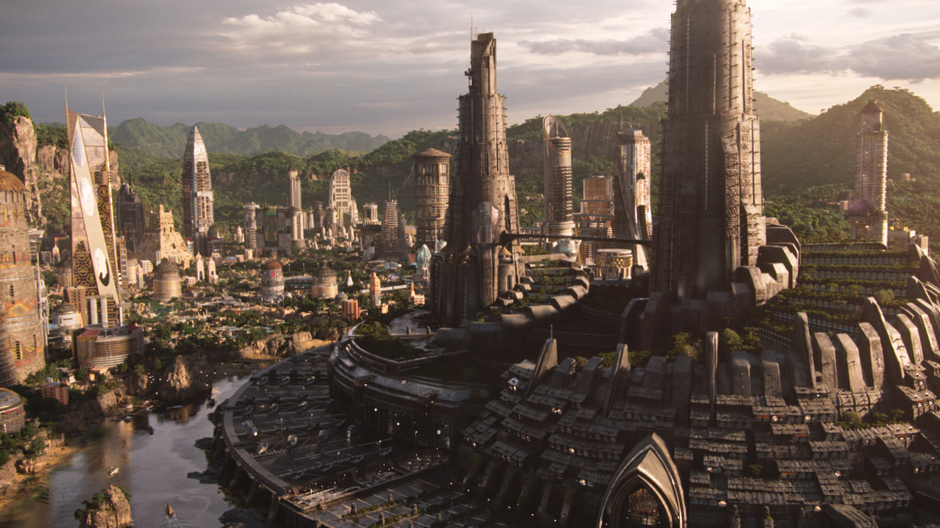
An example of solarpunk art and urban planning: The Afrofuturist design of Wakanda and its capital, Golden City. Designed by Hannah Beachler. Marvel Studios
The Punk in Solarpunk
Although an aesthetic of greenery and distributed clean energy seems far from “punk,” Keisha Howard was quick to note in her TED talk on solarpunk, "it takes a lot of punk to resist current power structures and build this type of future." The future imagined by solarpunk is inherently subversive to today’s prevailing, extractive system.
Many of Hayao Miyazaki’s films are considered works of solarpunk. In Nausicaä of the Valley of the Wind, the protagonist princess puts her life on the line against an imperialist, industrial army to protect the creatures of the forest as she tries to understand how humans and the forest can coexist. Solarpunk is not just an aesthetic; it’s a deeply political ethos.
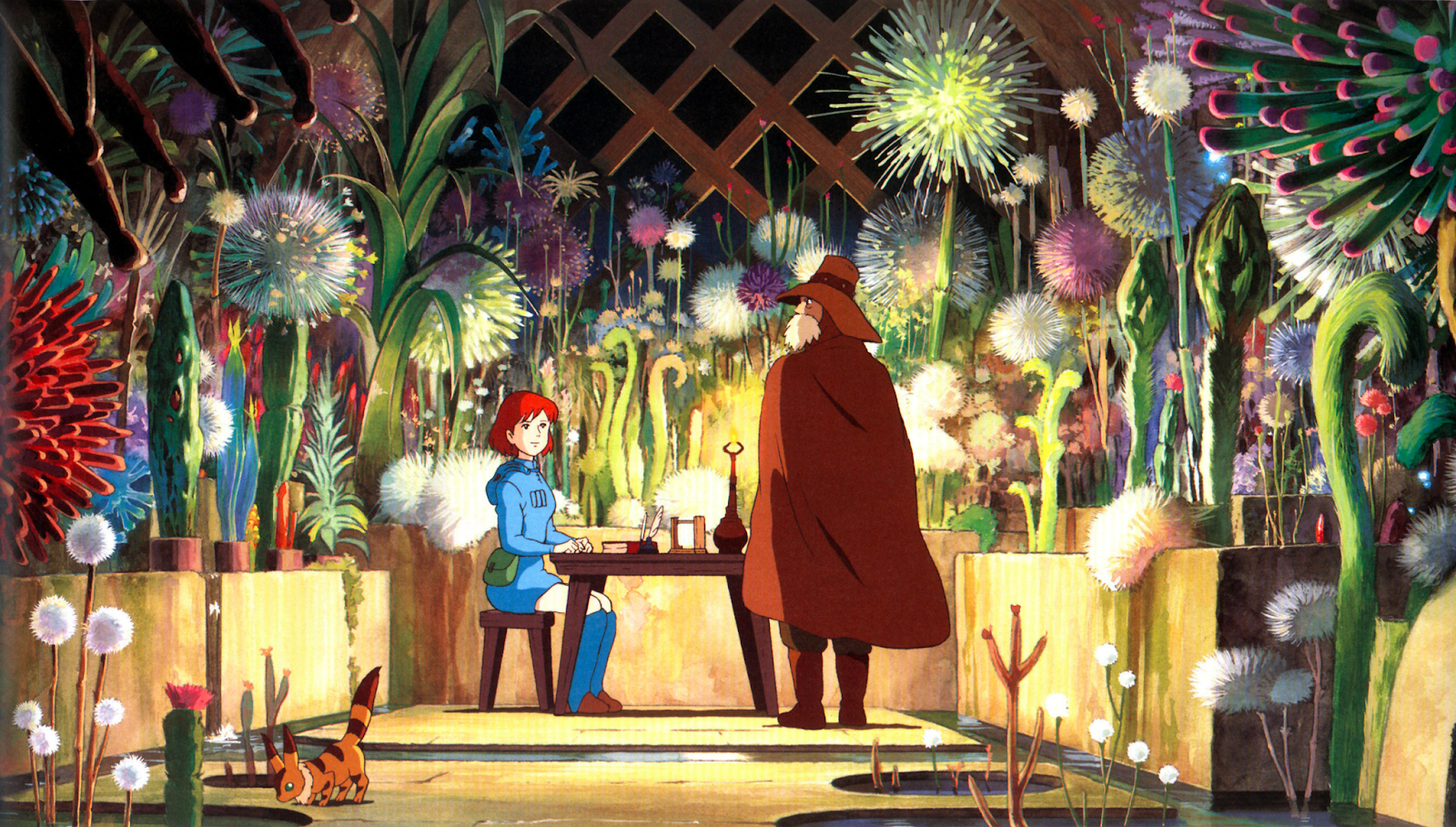
Hayao Miyazaki’s Nausicaä of the Valley of the Wind (1984)
The reality of creating a solarpunk future is one of intense struggle. The difference this time around is that where previous punk movements got their reputation from thorniness and a penchant for destruction, solarpunk seeks to achieve subversion through an attractive and constructive politics. As Buckminster Fuller counseled, “you never change things by fighting the existing reality. To change something, build a new model that makes the existing model obsolete.”
The Solarpunk Manifesto calls for this sort of solution-oriented thinking: “As our world roils with calamity, we need solutions, not warnings. Solutions to live comfortably without fossil fuels, to equitably manage scarcity and share abundance, to be kinder to each other and to the planet we share. At once a vision of the future, a thoughtful provocation, and an achievable lifestyle.”
Solarpunk is as much about reimagining physical structures to align with a true understanding of Earth’s limits as it is about rewiring mental and social systems. It seeks to propose solutions to today’s problems with a multicultural revolution that prioritizes social justice and environmental regeneration. If an ecological civilization is the destination, solarpunk is the vehicle.
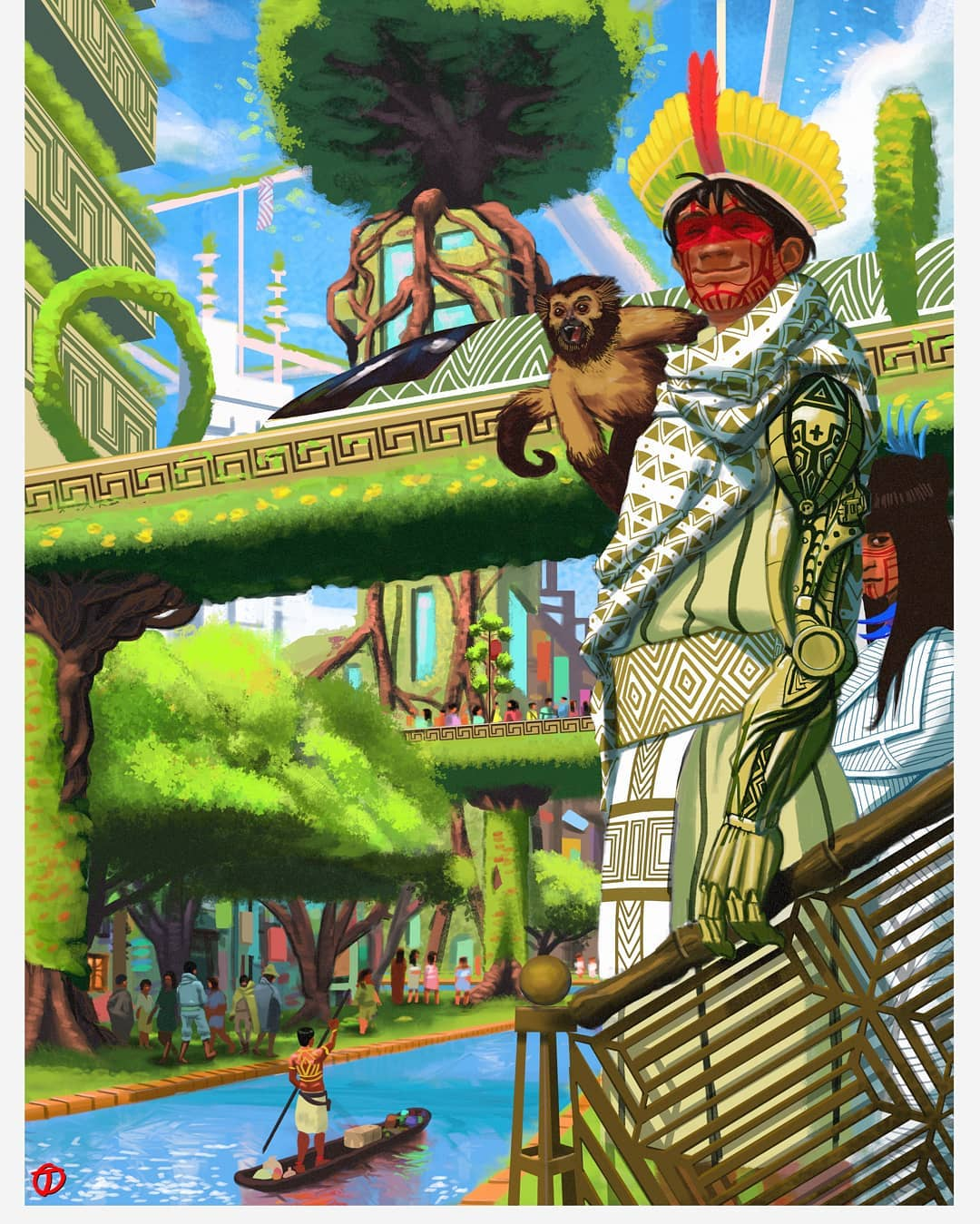
An example of solarpunk art: The “Amazofuturism” works of João Queiroz
Solarpunk as Narrative Strategy
Solarpunk isn’t fortune-telling. It isn’t meant to be literal or prescriptive. It’s narrative strategy; it’s a direction. Inherent to its ethos, its manifestations are decentralized and adaptable to local cultures, contexts, and beliefs.
Science fiction author Cory Doctorow said, science fiction isn’t predictive of the future; it tends to be about diagnosing our current aspirations and anxieties. Solarpunk is the first draft of a play script that we must rehearse living into. We will adapt as the story develops, but the importance is in setting an intention.
This makes solarpunk practical in the same way—although in the opposite direction—that the 1939 World’s Fair was instrumental in cementing car culture in the American psyche. At the World’s Fair, Americans were sold a vision of the future where cars were central to a metropolitan future, which enabled freedom and leisure. In the following decades, America built a version of that future that we still live in today. Solarpunk seeks to use that same strategy to build a future designed not for the benefit of a car company’s bottom line but for the whole planet.
Solarpunk is bottom-up advertising for a liveable future. Whatever shade and shape that may turn out to be in practice, what is important right now is that we galvanize around a vision worth fighting for. One in which technology works in service of ecology and a global culture adopts the centrality of an ecological education.

Technology working in service of ecological and egalitarian principles. Screen capture from a solarpunk video that was originally a Chobani commercial but was edited to remove product placement and create a decommodified version.
Solarpunk And Appropriate Technology
The solarpunk movement embodies a unique perspective on the role of technology in shaping a sustainable and ecologically harmonious future. It exists in the space between the skepticism of Neo-Luddism and the unbridled techno-optimism championed by the billionaire class and their ilk. Solarpunk acknowledges the inadequacy of attempting to solve today's pressing environmental issues with the same mindset that created them, but that doesn’t mean technology itself needs to be thrown out with the bathwater.
Solarpunk recognizes the sheer complexity of the challenges posed by climate change and biodiversity loss. As such, the movement leaves space for "appropriate technology”: innovation that is driven by a genuine commitment to preserving and enhancing both human and ecological well-being. Solarpunk maintains that the impulse for progress and innovation remains a powerful motivating force. However, it seeks to redefine progress, shifting the focus from the narrow pursuit of maximizing profit to optimizing the intertwined well-being of humanity and the environment. It also champions the intelligence of Indigenous knowledge, the wisdom of diverse cultures, and recognizes the profound lessons that nature, as the original inventor, can teach us.
All this being the case, contrary to popular belief, the ecological movement will actually require a shift toward more complex and more technologically, philosophically, and culturally advanced societies. Philosopher Bruno Latour, in his book "Down to Earth," eloquently captures the essence of this perspective: "There is nothing more innovative, present, subtle, technical… nothing more creative, nothing more contemporary than [living within the boundaries of our Earth system as it actually exists]."
What necessarily precedes a shift in the outcomes of our technology is a shift in the spiritual, social, and foundational beliefs that guided their creation. In this vision of a solarpunk future, technology serves as a means to an end, not an end in itself. It becomes a tool through which we pursue a new North Star: the sustenance and well-being of our ecosystems, which in turn sustain and enable our existence. The movement calls upon the creativity, ingenuity, and innovation of builders and creators, emphasizing that the new mandate is not a sidelining but a reorientation. These shifting priorities, constraints, and philosophies open up a whole new frontier for technological innovation. Within the constraints of a world with finite resources and ecological boundaries, Solarpunk's ethos encourages us to channel our innovative spirit into constructing a future that aligns harmoniously with the Earth and its ecosystems.
More Solarpunk Art
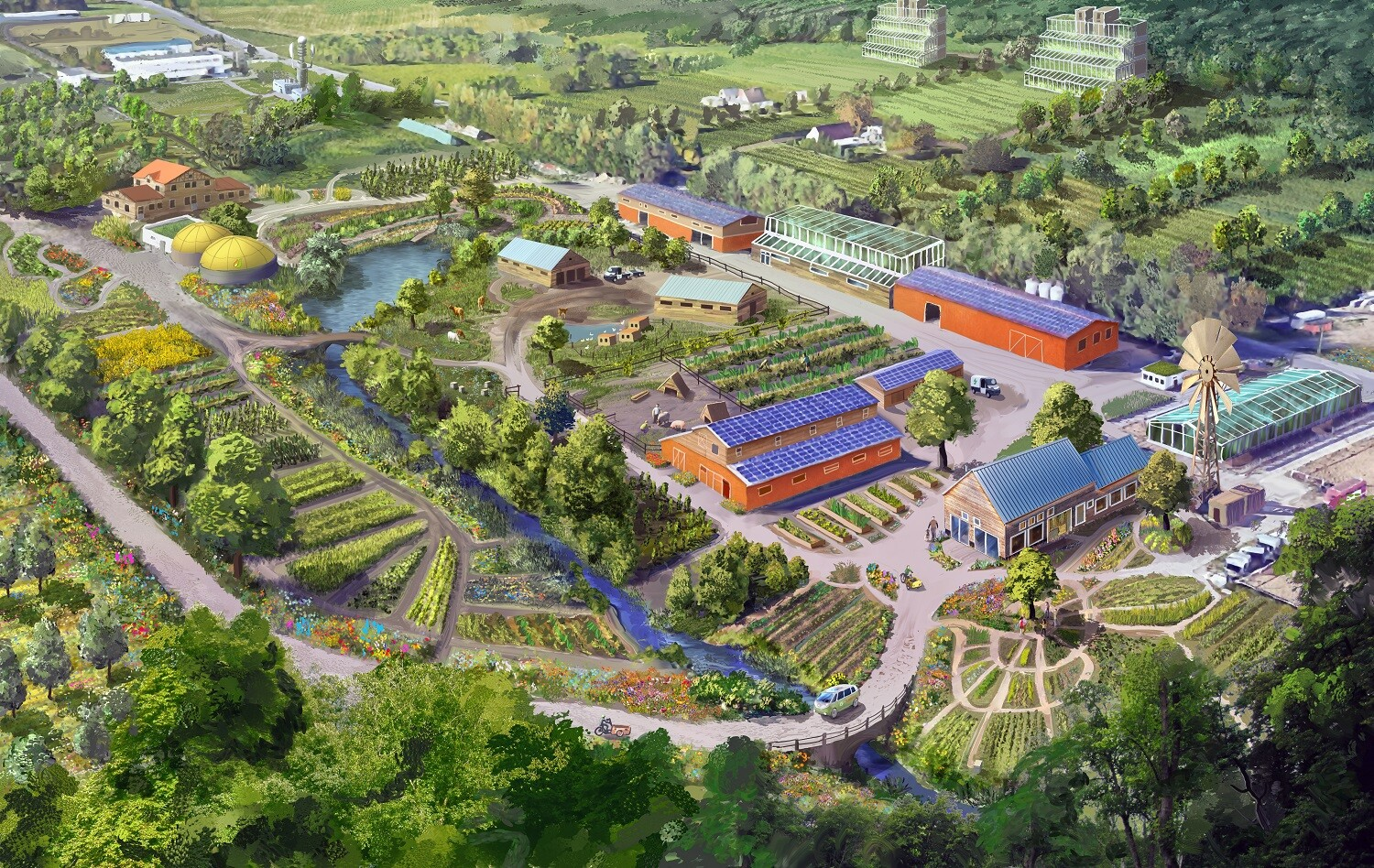
A solarpunk permaculture farm by Alex Romme

The Fifth Sacred Thing by Jessica Perlstein
AI-generated Art
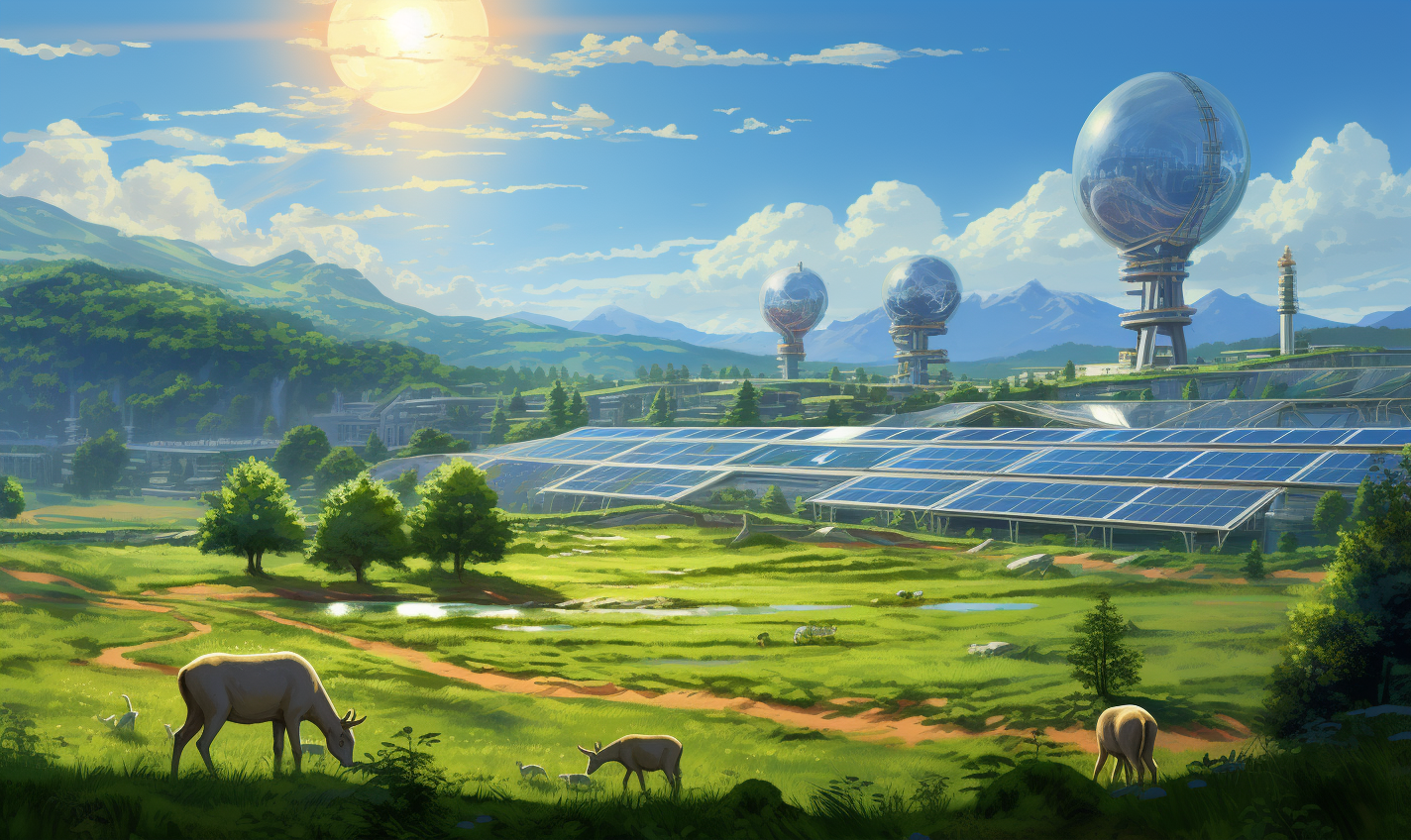

Some real-world examples of Solarpunk Architecture
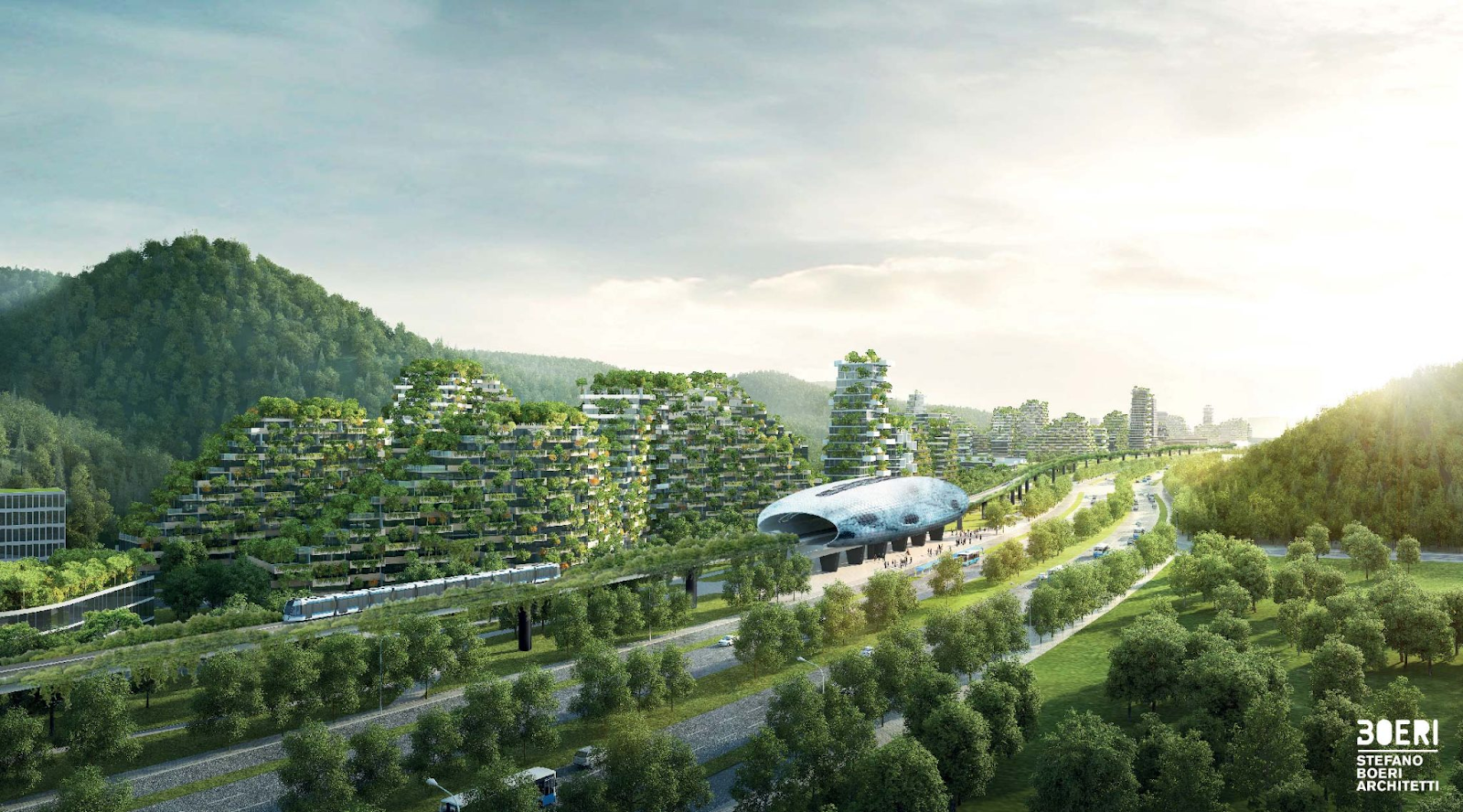
Stefano Boeri’s Forest City in Liuzhou, China (2017)
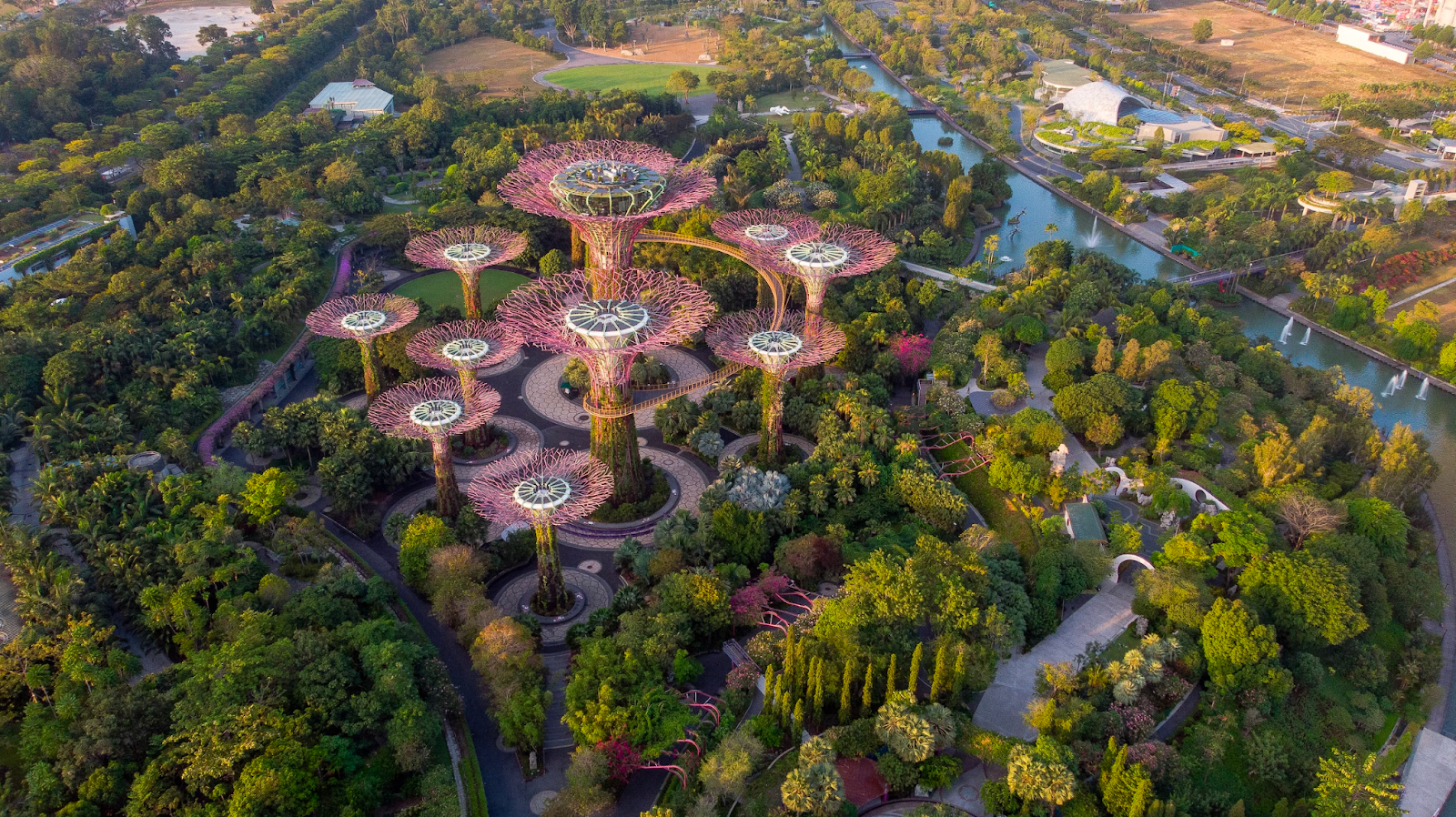
Gardens By the Bay, Singapore Image Credit: Sergio Sala on Unsplash
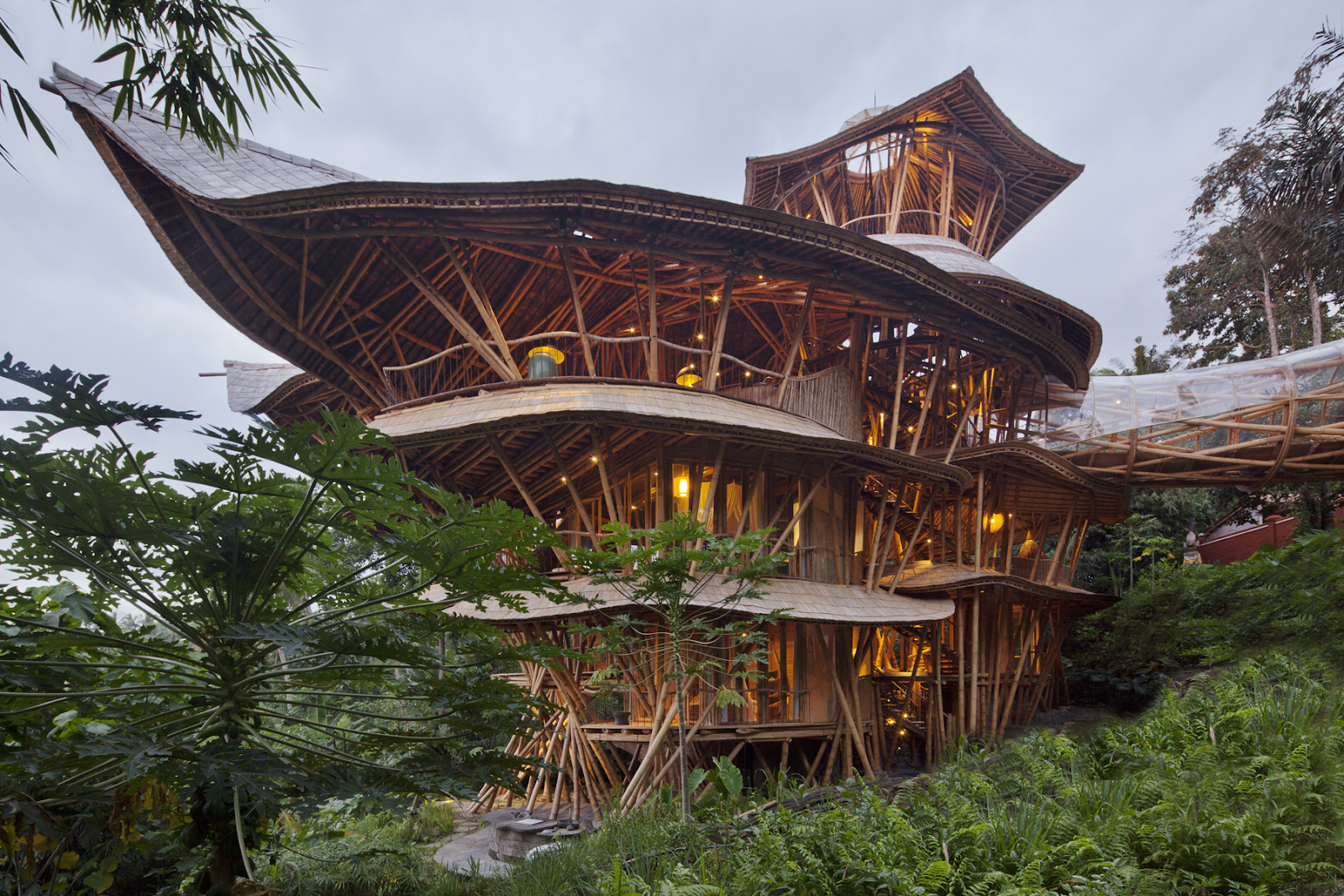
The bamboo architecture of IBUKU in Bali, Indonesia
.jpg?auto=compress%2Cformat&w=1440)


